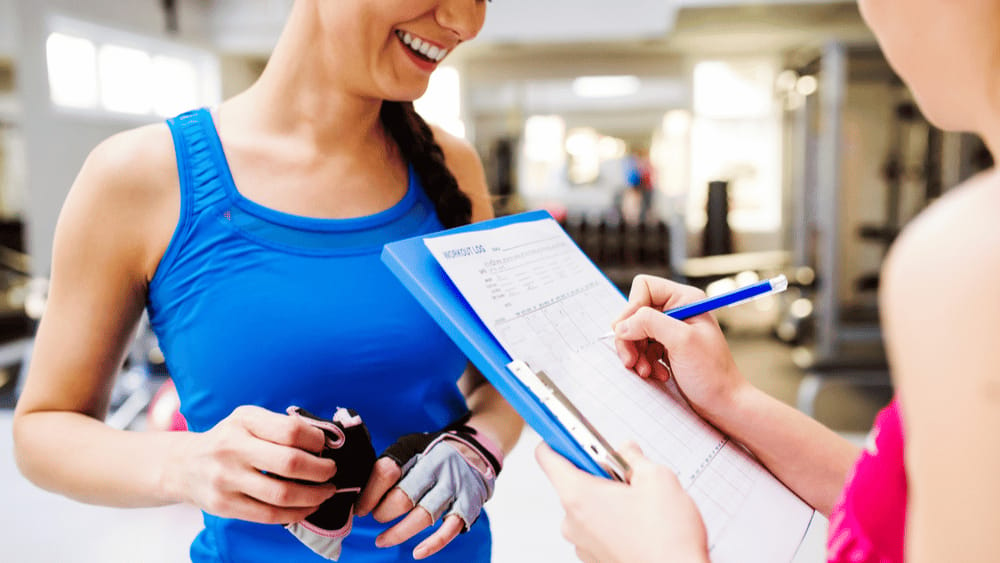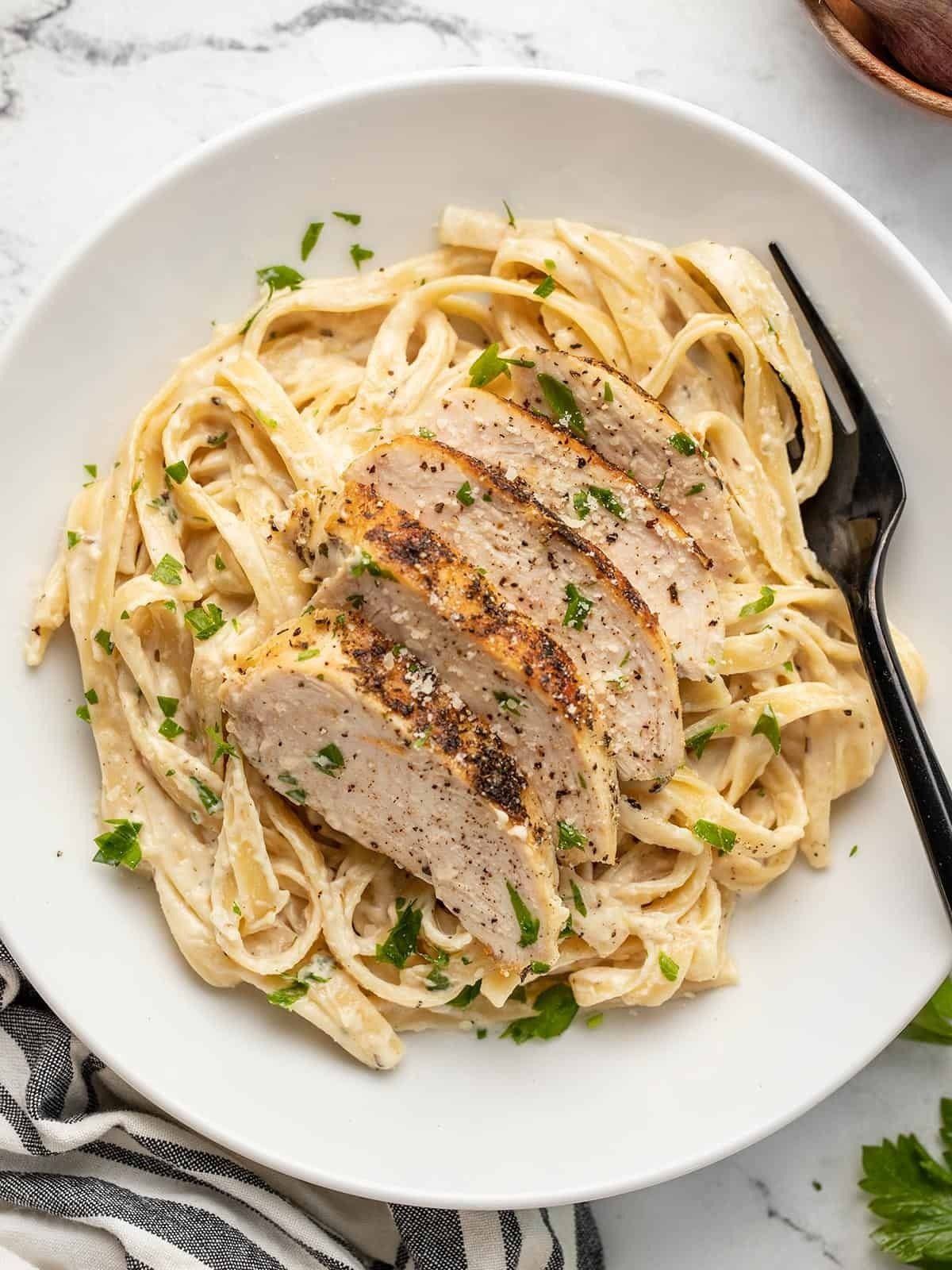Hey fitness nerds!
Thank you all {{active_subscriber_count}} of you!
The battle to reduce calories while still enjoying delicious food is real.
After struggling with bland "diet food" for years, I discovered three simple kitchen hacks that dramatically cut my calorie intake without sacrificing the flavour or satisfaction of my meals.
Read 🔽 below!
🍳
IN LESS THAN 10 MINUTES WE WILL COVER:
Weekly Insights:
3 Cooking Tricks that Helped Me Reduce Calorie Consumption by 57%
Article Explained Simple: Is Reverse Aging Possible?
Top 3 Ways to Make Money in the Health and Fitness Space Without Being Shredded and Lean
Healthy Chicken Alfredo Pasta Recipe
3 Cooking Tricks that Helped Me Reduce Calorie Consumption by 57%

When I first attempted to clean up my diet, I fell into the common trap of believing that healthy eating meant bland, boring meals. After months of unsatisfying food and constant cravings, I nearly gave up until I discovered these three simple cooking modifications that transformed my approach to healthy eating.
Incorporating protein powder as a baking and cooking ingredient was my first game-changing discovery. Most people only use protein powder for shakes, completely overlooking its versatility in the kitchen.
Using unflavored or vanilla protein powder as a partial flour replacement in baking recipes can dramatically boost protein content while reducing carbohydrates. The science behind this substitution is compelling. Protein has a higher thermic effect than carbs or fats, meaning your body burns more calories digesting it.
For pancakes, replacing 1/3 of the flour with protein powder not only cuts calories but creates a more filling breakfast that prevents mid-morning hunger crashes. The key is maintaining the right ratio. I typically substitute 25-30% of flour with protein powder to maintain proper texture.
Protein powder also works wonderfully in oatmeal, yogurt parfaits, and even savory dishes like soups and sauces as a thickener. When selecting a protein powder for cooking, opt for high-quality whey isolate or plant-based options with minimal additives.
My favorite baking recipe using protein powder is protein banana bread. By replacing 1/3 cup of flour with vanilla protein powder, I create a treat with 50% more protein and 30% fewer carbs than traditional banana bread, yet it remains moist and delicious.
Switching to non-stick olive oil spray instead of pouring oil directly into pans was another transformative change in my cooking routine. This simple swap had a dramatic impact on my calorie intake.
When cooking with traditional methods, I would typically pour 1-2 tablespoons of oil into a pan, adding 120-240 calories before the actual food even hit the surface. By switching to an olive oil spray and using just enough to coat the pan, I reduced the oil calories by up to 85%.
The key insight is that a 2-second spray from an oil mister typically delivers just 5-10 calories compared to the 120 calories in a tablespoon of oil. Over three meals daily, this simple switch can save between 300-600 calories.
Beyond the calorie reduction, using a spray provides more even coating and prevents food from absorbing excessive oil. For even better results, invest in a refillable oil mister that allows you to use high-quality olive oil without the propellants found in commercial sprays.
This technique works particularly well for sautéing vegetables, cooking eggs, and even roasting. For recipes where oil is an integral flavor component, I still use measured amounts, but for basic cooking needs, the spray has become my standard approach.
Mastering the art of water sautéing and using broth instead of oil was the third technique that revolutionized my cooking. This method involves using small amounts of water or broth instead of oil to cook vegetables and proteins.
When water sautéing, I start with a hot pan and add just 2-3 tablespoons of water or broth. As the liquid evaporates during cooking, I add small amounts as needed to prevent sticking. This technique can eliminate up to 120 calories per meal compared to oil-based sautéing.
Beyond the calorie savings, water sautéing actually enhances certain flavors. Vegetables often taste brighter, and their natural sweetness comes through more clearly. For additional flavor without calories, I add herbs, garlic, and spices to the cooking liquid.
Using vegetable, chicken, or beef broth instead of water adds another dimension of flavor while still keeping the dish low in calories. The broth infuses the food with savory notes that make you forget you're eating a calorie-reduced meal.
This technique works best for vegetables like onions, peppers, mushrooms, and greens. For proteins like chicken breast, the gentle cooking in broth often results in more tender meat compared to high-heat oil methods.
When implementing these cooking modifications, I started with just one technique at a time until it became habitual before adding another. This gradual approach prevented feeling overwhelmed by too many changes at once.
The combined effect of these three techniques reduced my daily caloric intake by approximately 57% without changing the types of dishes I enjoyed. Just as importantly, I never felt like I was "on a diet" because the meals remained satisfying and flavorful.
These simple cooking hacks have transformed not just my waistline but my relationship with food. Healthy eating no longer feels like a sacrifice but rather a creative challenge to maximize flavor while minimizing unnecessary calories.

Fitness and health enthusiasts - We have a lot of things in store for you!
Check out busybody.io - and join the waitlist for our brand-new AI health app.
Article of the Week
Article Explained Simple: Is Reverse Aging Possible?
Scientists from Harvard, MIT, and other institutions have published groundbreaking research suggesting that certain aspects of ageing may be reversible.
The study focused on cellular reprogramming, a process that can reset the biological age of cells by activating specific genes associated with youth.
Researchers developed a new technique that temporarily activates these youth-associated genes without causing cells to lose their specialised functions, a key limitation of previous approaches.
When tested in mice, this partial reprogramming approach improved several markers of aging, including better tissue regeneration, improved kidney function, and enhanced cognitive abilities in older animals.
The most exciting finding was that these improvements lasted for months after treatment, suggesting that temporary interventions might create lasting rejuvenation effects.
While the research is still in early stages and far from human application, it challenges the long-held belief that aging is an inevitable one-way process.
Fascinating Fact:
Your body already has natural "age-reversal" mechanisms at the cellular level. Every day, your cells undergo a process called autophagy, where they remove damaged components and recycle them. This cellular cleanup is so important that the scientist who discovered it, Yoshinori Ohsumi, won the Nobel Prize in 2016. Fasting, exercise, and certain foods like broccoli and green tea can naturally boost this anti-aging process.
We have also started a referral program where you can earn prizes for referring your friends to this newsletter.
What other topics do you want me to write about?
Top 3 Ways to Make Money in the Health and Fitness Space Without Being Shredded and Lean
The fitness industry often seems dominated by picture-perfect physiques, but there are plenty of lucrative opportunities for those with knowledge and passion rather than just six-pack abs:

Health and Wellness Writing
The demand for quality fitness content is exploding across blogs, magazines, and social media platforms.Focus on your areas of expertise, whether that's nutrition science, workout recovery, or the mental aspects of fitness.
Many publications pay $200-500 per article, and established writers can earn $50,000+ annually through consistent content creation.
Successful fitness writers typically combine scientific accuracy with relatable, actionable advice that readers can implement immediately.
Getting started requires building a portfolio, even if through your own blog or guest posts, to demonstrate your knowledge and writing style
Online wellness coaching
Unlike personal training, wellness coaching focuses on holistic health improvements rather than physical transformations.Coaches help clients with habit formation, mindset shifts, stress management, and creating sustainable lifestyle changes.
This approach allows you to help clients achieve meaningful results without needing to showcase your own physical appearance as credentials.
The average wellness coach charges $75-150 per session, with experienced coaches earning $100,000+ annually through group programs and courses.
Credentials like health coaching certifications can help establish credibility, though your ability to get results for clients ultimately matters most.
Fitness technology consulting
As fitness tech explodes with apps, wearables, and online platforms, companies need consultants who understand both technology and fitness principles.Opportunities include user experience design, content development, product testing, and marketing strategy.
Tech companies value fitness enthusiasts who can translate complex health concepts into user-friendly features and experiences.
Consultants typically charge $50-150 per hour, with full-time roles offering competitive salaries plus equity in startups.
Building a portfolio by reviewing existing products, creating improvement proposals, or volunteering for beta testing can help you break into this field.
Healthy Chicken Alfredo Pasta Recipe (makes 4 servings)
This lightened-up version of a classic comfort food satisfies creamy pasta cravings with less than half the calories of restaurant versions.
This recipe was created in 2 minutes with the BusyBody App. Click the button for free access to the app.

Macros per serving
Total Calories: 390 kcal
Protein: 35 g
Carbohydrates: 40 g
Sugars: 5 g
Fat: 12 g
The Ingredients
8 oz (225g) whole wheat or chickpea pasta
12 oz (340g) boneless, skinless chicken breast, cut into strips
2 tbsp olive oil spray (about 8-10 sprays total)
3 cloves garlic, minced
1 small onion, finely diced
1 cup low-sodium chicken broth
1/2 cup plain Greek yoghurt (2% fat)
1/4 cup grated Parmesan cheese
1 tbsp cornstarch mixed with 2 tbsp water
1 tsp Italian seasoning
1/4 tsp nutmeg
Salt and pepper to taste
2 cups fresh spinach
1/4 cup chopped fresh parsley
Instructions
Cook the pasta according to package directions until al dente. Reserve 1/2 cup of pasta water before draining.
Season chicken strips with salt and pepper. Spray a large non-stick pan with olive oil spray (about 4 sprays) and heat over medium-high heat.
Add chicken to the hot pan and cook for 4-5 minutes on each side until golden and cooked through. Remove chicken and set aside.
Respray the same pan (about 2 sprays) and add onions. Cook for 2-3 minutes until softened.
Add garlic and cook for another 30 seconds until fragrant.
Pour in chicken broth and bring to a simmer. Reduce heat to medium-low.
In a bowl, whisk together Greek yoghurt, grated Parmesan, and cornstarch mixture until smooth.
Slowly add the yoghurt mixture to the pan, whisking continuously to prevent curdling.
Stir in Italian seasoning, nutmeg, salt, and pepper. Let the sauce simmer gently for 2-3 minutes until it begins to thicken.
Add the cooked chicken back to the pan along with the drained pasta and spinach. Toss everything together until the spinach wilts and the pasta is coated with sauce.
If the sauce is too thick, add some of the reserved pasta water, a tablespoon at a time, until the desired consistency is reached.
Garnish with fresh parsley and an additional sprinkle of Parmesan if desired before serving.
Make your dream of working online a reality and start a newsletter - join beehiiv for free and don’t pay any renewal fees until you grow your subscriber base >2500 subscribers.
I’ve personally tried plenty of other platforms, and Beehiiv is hands down the best and easiest to use.

